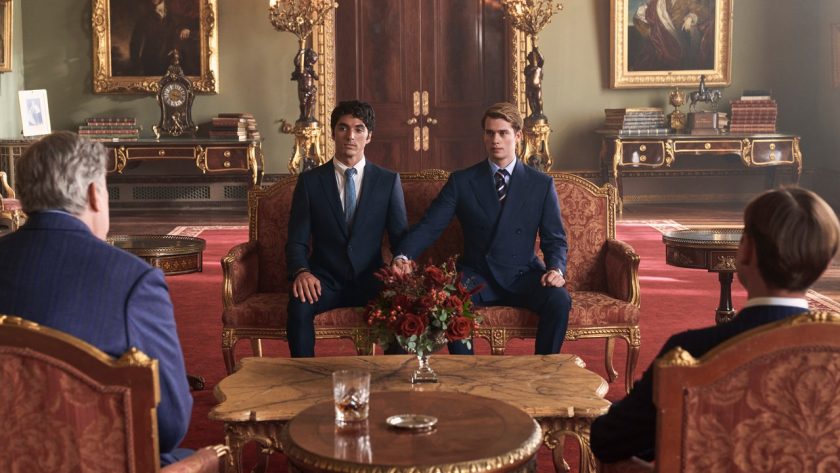In Red, White & Royal Blue, the Amazon Prime movie based on Casey McQuiston’s novel of the same name released today, Prince Henry of England is keeping something from the public: despite being spotted out and about with women, he’s gay. For years, he’s determined to keep up the facade—until he falls in love with Alex Claremont-Diaz, the charming son of the United States president. Brief spoilers are to follow, but Henry must grapple with coming out to both his conservative family and his country. In one poignant scene, Alex asks Henry if anyone in his family knows he’s gay. While he responds that his sister accepts him, others have their hesitations: “Grandpa’s a cold hard realist. He sat me down on my 18th birthday and told me not to let any selfish desires I might be harboring reflect poorly on the Crown,” Henry reveals to Alex. “Prince Henry belongs to Britain.”
When McQuinton first came up with the idea of Red, White & Royal Blue in early 2016, the British royals did not have any openly gay family members. That changed later in the year when Lord Ivar Mountbatten, a cousin of Queen Elizabeth and great-great-great-grandson of Queen Victoria, announced his relationship with partner James Coyle. In 2018, the two married at his estate of Bridwell Park, making international headlines as the British royal family’s first gay wedding.
Still, it’s unlikely that Mountbatten is the only Windsor (or Hanover or Stuart) to identify somewhere on the LGBTQ+ spectrum. In fact, many historians believe that the 17th-century king James I had intimate relationships with several of his male courtiers. The most significant was George Villiers, whom the king later made the Duke of Buckingham. In the book “King James and Letters of Homoerotic Desire,” author David M. Bergeron sorted through pages upon pages of correspondence between the two men, kept in the archives at the British Library and the National Library of Scotland.
He found many of them to be explicitly intimate: “I desire to live only in this world for your sake, and that I had rather live banished in any part of the earth with you than live a sorrowful widow’s life without you,” James wrote to the Duke in 1623. Daniel Smith, in his book “Love Letters of Kings and Queens,” came to a similar conclusion. “To the shock of many courtiers, the pair were demonstratively affectionate to each other in public,” he writes. Indeed, in King James I’s Encyclopedia Britannica entry, his romantic relationship with Buckingham is stated as fact: “His relationship with James became sexual, and he retained the king’s passionate support to the end of the latter’s life,” the editors write. And when Apelthorope Palace, King James I’s favorite royal residence, was undergoing renovations in the early 2000s, workers even discovered a tunnel connecting the two men’s bedrooms.



